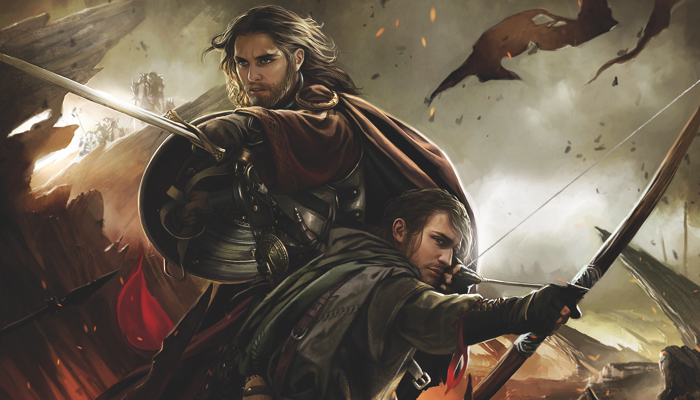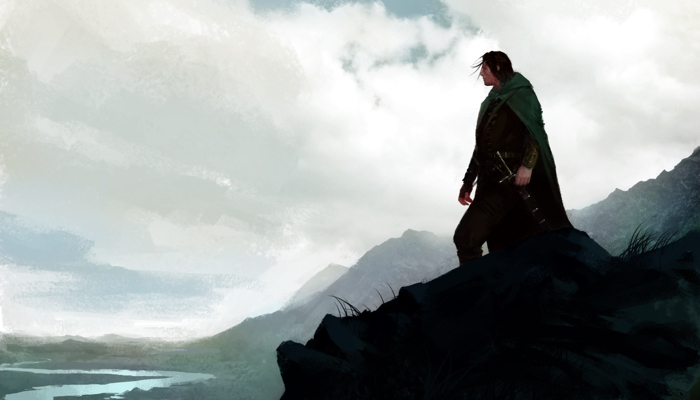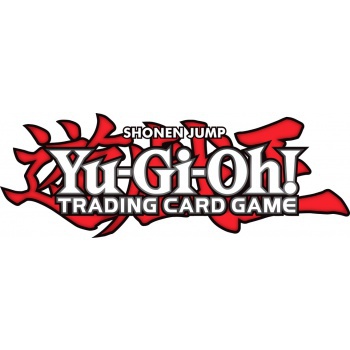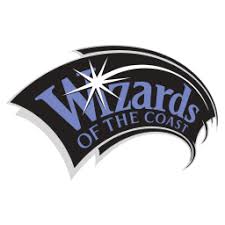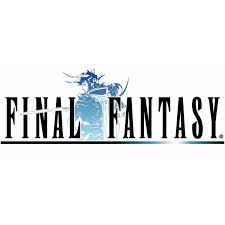The Lord of the Rings LCG Core Set
The Lord of the Rings LCG - Core Set
“Yet it is not our part to master all the tides of the world, but to do what is in us for the succour of those years wherein we are set, uprooting the evil in the fields that we know, so that those who live after may have clean earth to till.”
–Gandalf, The Return of the King
An ancient evil stirs in the black lands of Mordor, and the people of Middle-earth speak of a terrible doom approaching from the east. The Dark Lord Sauron is gathering his forces, and should he acquire the power he seeks, he will cast the world into eternal shadow. The only hope lies in a heroic few who must work together to stem the tide of evil…
The Lord of the Rings: The Card Game is a cooperative Living Card Game® in which one to two players (or up to four with two Core Sets) command some of the most powerful characters and artifacts in Middle-earth.
Assembling Your Fellowship
“A hunted man sometimes wearies of distrust and longs for friendship.”
–Aragorn, The Fellowship of the Ring
As one of the world's most enduring stories, The Lord of the Rings has inspired all manner of products, with myriad games among them. Still, even among the weighty catalog of The Lord of the Rings-themed games, The Lord of the Rings: The Card Game stands out. The world's first fully cooperative LCG®, The Lord of the Rings: The Card Game offers an experience that is completely unlike anything that arrived before it and that continues to be one of the most innovative, immersive, and satisfying takes on the fantasy world that J.R.R. Tolkien created.
At the heart of it all is the idea that you don't have to play against your friends. You can work with them…
While it's true that all the scenarios from The Lord of the Rings can be played solo, it is the game's multiplayer format that truly distinguishes it from others, and that, arguably, best captures the spirit of its source material by allowing you and your friends to join forces against the Dark Lord and his minions.
Today, guest writer Sean Switajewski shares his love of the cooperative The Lord of the Rings: The Card Game experience, and looks at some of the ways that you can strengthen your fellowship through cooperative deck-building.
Sean Switajewski on Cooperative Deck-Building
I can remember it vividly, even though it’s been several years… I wandered into the Fantasy Flight Games Event Center to pick up the latest expansion for another Living Card Game®. As I was browsing the numerous shelves, a striking red-hued box caught my eye. "They have a The Lord of the Rings game?" I marveled. "Solo AND multiplayer?!" I don’t know if I had ever been so quickly sold on a game, and it’s been my game of choice ever since.
It is probably more true than bold to say that the first reason players come to The Lord of the Rings: The Card Game is due to their love of the iconic characters and intricate world built by J.R.R. Tolkien. If I had to pick a second reason, my money would go on its cooperative design, and how that design gives the game its rich and distinct flavor.
The cooperative multiplayer nature of The Lord of the Rings: The Card Game truly sets it apart from other gaming experiences. Absolutely true to the source material, players gather not to defeat each other, but to band together and defeat the ultimate evil that is the encounter deck. Joining forces never felt so good. Players get to craft their own personal fellowships, and then join with their teammates to take on the servants and machinations of Sauron. And this adds dimensions to the game that are likely a bit foreign to newer players—even those who are veterans of competitive card games.
The nuances of deck-building can be complex enough with any head-to-head game, but The Lord of the Rings adds a wrinkle by allowing players to interact cooperatively with each other's decks. The endeavor takes on an entirely new quality, and building fellowships for The Lord of the Rings is truly a singular experience.
Together Everyone Achieves More
Building for cooperative play changes the way you have to look at the value of the cards themselves. In a competitive card game, you are always inclined to consider, “How will this card help my deck?” In The Lord of the Rings, however, it is often more useful to consider, “How will this card help my team?”
Some cards’ values simply increase as you add more players. A simple example of this is Campfire Tales (The Hunt for Gollum, 3). If you’re playing solo, a one-cost event that draws you one card looks mediocre at best. However, in a four-player game, the value proposition of Campfire Tales scales immensely, with that one resource now drawing four cards for the players as a group.
 Cards like Dáin Ironfoot (Return to Mirkwood, 116) and Visionary Leadership (The Morgul Vale, 136) offer more value for their cost when other players can include Dwarf or Gondor characters in their decks. Characters with the Ranged and Sentinel keywords instantly become more flexible in their uses, since they can he used to help out anywhere on the board. Likewise, you should not underestimate the value of Eleanor (Core Set, 8) in multiplayer. The more cards you reveal each turn, the more she is likely to stop a game-ending treachery. Basically, anything that is more likely to be useful with more targets is going to be a better card in multiplayer.
Cards like Dáin Ironfoot (Return to Mirkwood, 116) and Visionary Leadership (The Morgul Vale, 136) offer more value for their cost when other players can include Dwarf or Gondor characters in their decks. Characters with the Ranged and Sentinel keywords instantly become more flexible in their uses, since they can he used to help out anywhere on the board. Likewise, you should not underestimate the value of Eleanor (Core Set, 8) in multiplayer. The more cards you reveal each turn, the more she is likely to stop a game-ending treachery. Basically, anything that is more likely to be useful with more targets is going to be a better card in multiplayer.
While some cards get better with more players, the value and utility of some cards change entirely when you evaluate them in the context of the greater group, rather than in the context of your deck alone.
Take Song of Mocking (The Dead Marshes, 99), for example. In single player games, this card has limited utility. A hero who can more readily take damage, like Frodo Baggins (Conflict at the Carrock, 25), might use the Song to protect another hero from attacks. In that case, though, why bother? Why wouldn’t Frodo just defend the attack himself?
Now, take that same card in multiplayer, where the variability of encounter cards is higher. There are more enemies. That means more attacks and more heroes for Song of Mocking to protect. In this setting, a hero who invites taking damage, like Glóin (Core Set, 3), will happily use Song of Mocking to siphon that damage off from another player’s hero. In the larger fellowship, Glóin now has a pseudo-sentinel ability, and an opportunity to activate his ability in cases where otherwise he couldn’t. And these facts work both to your benefit and to the benefit of the fellowship.
Know Your Role
Thinking about decks in the context of the larger team also affords you more freedom in the focus of your deck. In other games, or even in The Lord of the Rings solo play, you are basically required to build your deck to handle each and every aspect of the game. You must quest, you must defend, and you must attack—all within the space of a single deck. On the other hand, the multiplayer experience of The Lord of the Rings leaves spaces open to players that would never be possible in a competitive game. It allows you and your friends the opportunity to specialize your decks, each focusing on a separate game aspect.
 As an example, one player might devote more space in his deck to abilities that boost Willpower and help with the Quest phase, using cards like Faramir (Core Set, 14) and Scouting Party (Temple of the Deceived, 63) to ensure your group makes progress on the quest.
As an example, one player might devote more space in his deck to abilities that boost Willpower and help with the Quest phase, using cards like Faramir (Core Set, 14) and Scouting Party (Temple of the Deceived, 63) to ensure your group makes progress on the quest.
If you're playing solo, focusing too narrowly on such cards would be risky, but it's not as worrisome if your teammate is running Beregond (Heirs of Númenor, 1) and Legolas (Core Set, 5), who can defend and attack across the table with their Ranged and Sentinel keywords. Similarly, with the support of other players, some truly creative decks can achieve heights not viable in solo play, like those focused on the more recent victory display mechanics.
While you're questing, defending, and killing enemies, it can be hard to devote resources to cards like None Return (Across the Ettenmoors, 62) and Out of the Wild (Road to Rivendell, 36). However, if your teammates can buy you a bit of time to get rolling, your deck's focus on removing and cancelling some of the encounter deck's worst cards can make your fellowship far stronger by the time the encounter deck might othewise be offering an even greater threat, and your teammates can even include copies of Keen as Lances (Escape from Mount Gram, 37), a powerful card they would never consider if you weren't working to reduce its cost.
All for One, and One for All
Even something as seemingly mundane as choosing which of the game's more popular cards you'll want to include in your deck becomes more interesting in the context of a fellowship. If you think of each player’s deck as a part of a larger, segmented collection of cards to which all players can potentially gain access, then you open up numerous possibilities that simply do not exist in a normal head-to-head game.
- Do you want to attach Asfaloth (Foundations of Stone, 110) to your Glorfindel (Foundations of Stone, 101), but can’t find a way to pay for it because you have no Lore heroes? An altruistic friend with Lore heroes can simply include it in her deck and play it on your hero.
- Is one of your teammates playing an aggressive deck with Boromir (The Dead Marshes, 95), knowing that his threat will skyrocket as Boromir readies over and over to handle multiple enemies? Pack a few copies of The Galadhrim’s Greeting (Core Set, 46) to help him out.
- If you want to get really sneaky, you can play Lore Aragorn (The Watcher in the Water, 53), and pass him around your fellowship with Desperate Alliance (On the Doorstep, 10), allowing your teammates to take advantage of your hero’s threat reduction ability, too!
Including cooperative one-off cards is easy, but the fellowship deck-building rabbit hole goes much deeper. The very core of your deck can be cooperative, relying on your partners’ cards to help power your more elaborate combos.


Brand son of Bain (The Hills of Emyn Muil, 72) and Tactics Merry (The Black Riders, 3) have a particularly interesting synergy. Provided the enemies are in the right place, Brand and Merry, controlled by different players, can ready each other each time they attack and destroy an enemy. Oh, but the combo’s not done with those two. You can destroy all the enemies on the board if you can get them into the correct position, but the players need to use engagement shenanigans like The Hammer-stroke (The Blood of Gondor, 111) to really make this work. If you can then combine this offensive power with Thicket of Spears (Core Set, 36), and you have a beautiful symphony of destruction.
This type of synergy is only available in multiplayer, and the inter-deck combo space is widening with each release!
A Game Apart
There truly is nothing else in the market quite like The Lord of the Rings: The Card Game. No other game out there allows players to shape the experience into exactly the game they want. You can play solo or multiplayer; Saga quests or standard; Easy mode, Standard mode, or Nightmare. Whatever you want to get out of this game, you can get it. So go and forge your very own fellowship. Middle-earth is waiting!
Sean Switajewski is a long time co-host and resident voice of reason for Cardboard of the Rings. A vocal deck-building enthusiast, and veteran of countless card games, he's spent the past several years keeping the forces of Sauron at bay.





